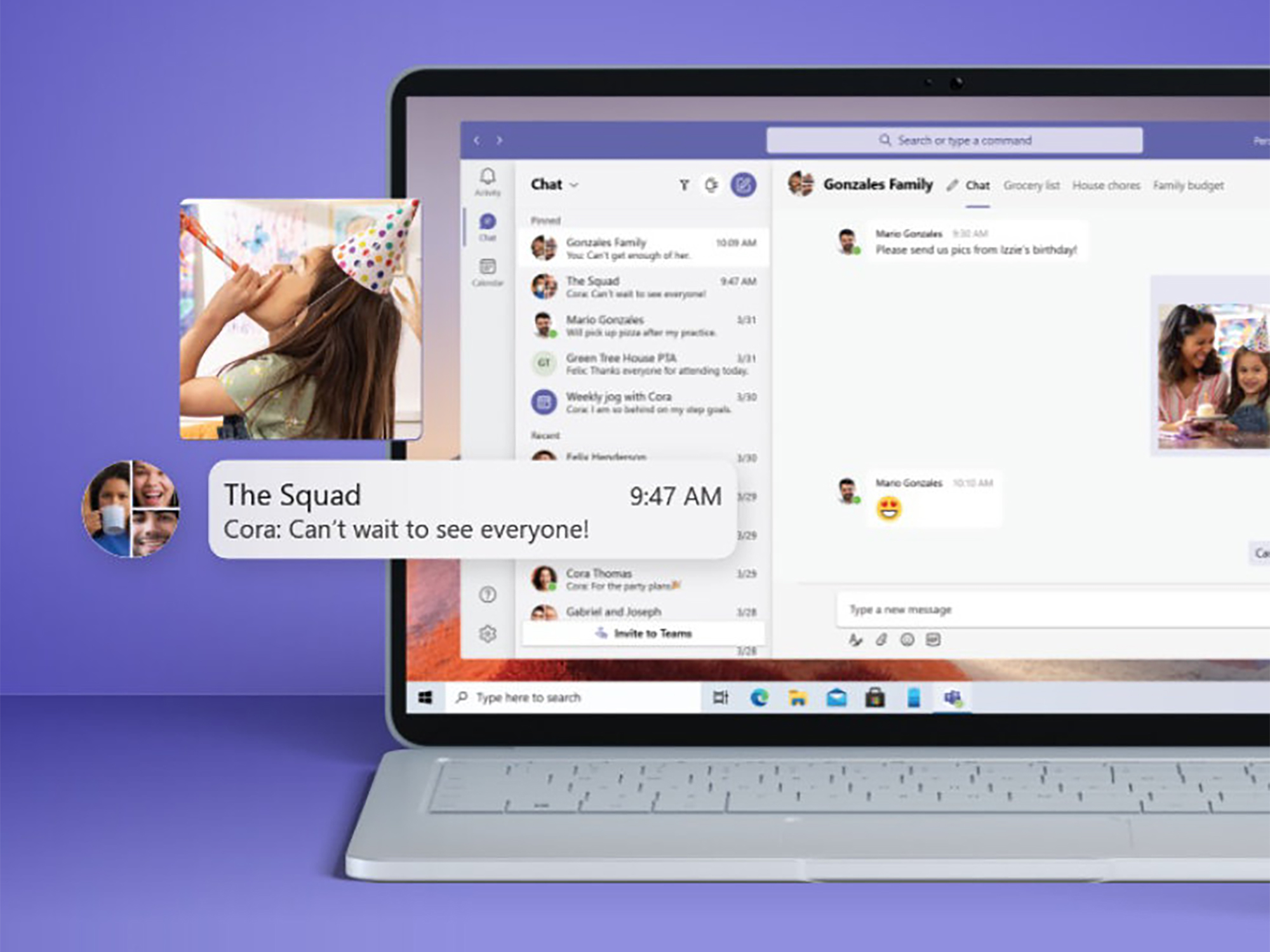

If you’ve upgraded to Windows 11 you’ve probably noticed that Microsoft Teams is front and center on the new-look taskbar. Having long been primarily for business users, Microsoft is now pushing the chat app as a consumer option too, ready to replace Skype, Slack, Facebook Messenger, and any other communication tools you’re already using.
It’s important to note that the version of Teams that comes preinstalled on Windows 11 is a more lightweight edition of the software designed for personal use. If you want to log into the Teams account you use for school or work, you’ll need the full Microsoft Teams app. Check out the Microsoft support page for more information on how these two versions work together.
In the meantime, click on the Chat button on the taskbar (the purple speech bubble with a camera inside) to see a simplified version of the Teams interface. If you want the full application, you can then click Open Microsoft Teams.
Let’s get started.
1. Set your status
In any chat app it’s important to let other people know when you’re available and when you aren’t. In Teams you can do this by clicking your profile picture (top right), then clicking on your current status.
Here, you’ve got some options—you can set it to Available, Appear Away, and Appear Offline. Whatever you choose, this won’t affect your ability to send and receive messages. To go further, pick Set status message from the same drop-down menu. This lets you set a custom message for other people to see, so you can provide more detail on what you’re currently doing—try “on lunch” or “in a meeting.” Here, you can also set an expiration time for it, so it automatically disappears at the end of the day, at the end of the week, or after one or four hours.
2. Control your notifications
You don’t want to be overwhelmed with chat notifications from Microsoft Teams if you’re in some busy conversations. But the software can help with that. Click the three dots (top right), and then go to Settings and Notifications to set your preferences.
[Related: It’s time to turn off some notifications]
Click Edit next to Chat to determine which events (such as mentions of your name or reactions to your messages) result in a banner notification. There’s also a link to the main Windows 11 notifications settings page, where you can customize these alerts further.
3. Fully format your messages
Teams works well for sending quick bursts of text and emojis to your contacts, but you can compose more detailed messages if you want to. To do that, click on the Format button underneath the text entry box—the icon is an A next to a pen shape.
This opens up a whole host of extra options for you. You can change the size and color of the text, add indentations and bullets, drop in divider lines, and even include a table in your message. Hover the cursor over all of the icons on the toolbar to see what each one does.
4. Find unread messages
As you start to use Microsoft Teams more and more, it can be difficult to keep up with all the individual conversations and group chats that you’re involved in. The main Chat panel has a filter option that can be helpful here.
Click Chat to get to all of your messages, then click the Filter button at the top of the conversation list (three horizontal lines). Choose Unread, and Teams will show you all of the messages you’ve not had a chance to look at yet.
5. Mute and hide conversations
In messaging programs that you use a lot, the ability to mute conversations is essential—otherwise you’ll get too distracted by incoming messages. From the Chat tab, click the three dots to the side of a conversation and then Mute. You won’t get any notifications about that specific thread until you unmute the conversation again.
On the same drop-down menu is a Hide option, which mutes a conversation and then hides it from view in the main list, too. To find it again, you need to search for the contact(s) you’re chatting with in the search box at the top of the interface.
6. Switch to dark mode
No application is complete without a dark mode that you can switch to. Microsoft Teams is no different. Click the three dots up in the top right-hand corner of the interface, then choose Settings and Appearance and accessibility, and you can choose between a Light, Dark, or High contrast theme.
[Related: How to turn on ‘dark mode’ for all your gadgets and apps]
If you’d rather Teams followed the master Windows 11 setting, turn on the Follow operating system theme toggle switch.
7. Remove Teams from the taskbar
Microsoft Teams isn’t for everyone, and you might not necessarily appreciate the way it’s been placed right in the middle of the taskbar in Windows 11. To remove the shortcut (and any other system shortcuts, like Search or Widgets), open the Start menu and choose Settings. There, click Personalization then Taskbar, and you can turn the Chat toggle switch off.
Teams will still be installed on your computer and available through the Start menu if you need it. To remove it completely, open Settings, then choose Apps and Apps & features. Click the three dots next to Microsoft Teams to find the Uninstall option.
